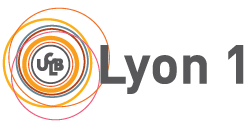Systems build upon nano-devices are widely spread in computers, transports or healthcare equipment. These systems usually involve a huge number of nano-devices, leading to high complexity structures and hardly predictable behaviours.
This course provides basic knowledge and tools to study and design such systems. This course provides concepts and tools for the description, the analysis, the design, the optimisation and the validation of such systems at multiple scales. Many examples are used, with a special highlight on digital systems.
This course is built upon case studies, practicals and labs. It intends to provide basics engineering skills to be able to interact with product engineers or to manage teams in a system R&D environment.
Outline of the course
1. Introduction
1.1. Systems basics, Complexity
1.2. Examples of systems, behaviour and size effects (the system is more than the sum of its parts).
2. Design Methodologies
2.1. Functional and structural analysis, Number encoding in binary.
2.2. Design methods: bottom-up and top-down.
2.3. Building Basic circuits with few devices, characteristics and fonctionalities.
2.4. Building circuits and functions to perfor arithmetic operations.
3. Methods and tools for top-down design
3.1. Validation/Simulation of systems (continuous time, discrete time),
3.2. Modeling and design tools,
3.3. Optimization techniques.












